“We few, we happy few, we band of brothers”
Act 4, Scene 3 of Henry V, William Shakespeare“Never was so much owed by so many to so few”
Speech delivered to the House of Commons of the United Kingdom
by prime minister Winston Churchill on 20 August 1940.
The glorious happy few
The Battle of Britain lasted from 10 July to 31 October 1940, covering part of the Blitz.
Hugh Dowding, head of RAF Fighter Command, successfully defended the United Kingdom against Luftwaffe attacks through his careful management of fighter resources and detailed preparation of Britain’s air defence.
On the British side the defence was provided by Hawker Hurricane and Spitfire Mk1.
On the German side the attack was led by JU 87 Stukas and Heinkel He 111s protected by Messerschmitt Me Bf 109 E-
The Royal Air Force
Hawker Hurricane
The Hawker Hurricane is a fighter aircraft of the 1930s-40s which was designed and builtby Hawker Aircraft Ltd.
On November 6th 1935, the prototype Hawker Monoplane K 5083, first flew at the Brooklands Aerodrome, Surrey. Designed by Sydney Camm to meet a Royal Air Force Specification for a high speed monoplane interceptor, the airplane was developed around the Rolls-Royce PV-12 engine
Prototype as toy by Mettoy
Having had his Tipp & Co toy company expropriated by the Nazis in 1933, Philip Ullmann managed to escape to Great Britain, where he set up a new toy factory, Mettoy.
Well aware of the threat hanging over Europe, he understood the importance of this prototype; in 1935, using an existing toy model, he gave it a new design and added the inscription K 5083. This toy featured a star-shaped engine instead of a tapered nose, but the body and wings were quite similar.
In a way, it’s the first happy few toy.
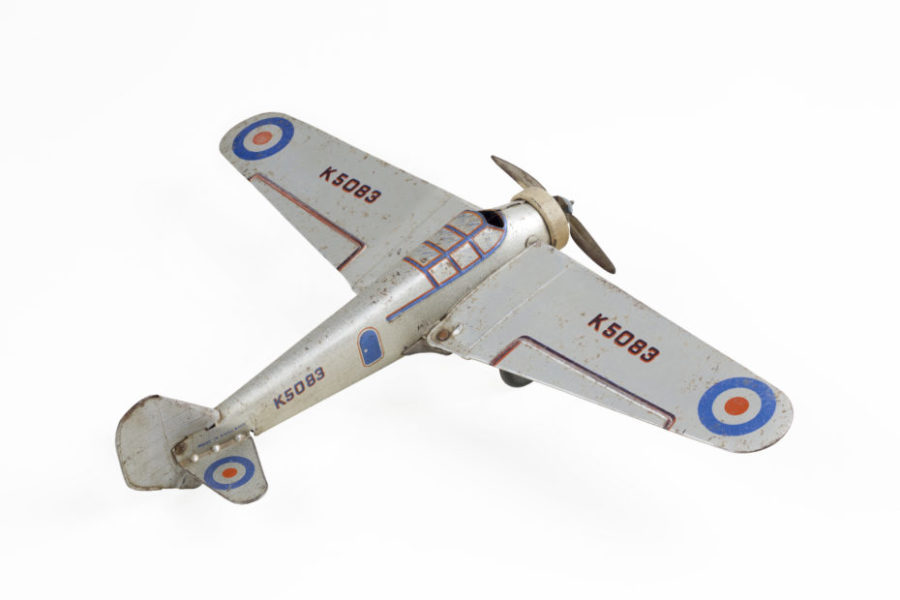
K 5083 Mettoy Grande-Bretagne 1935, 41 x 29 cm
The Hurricane inflicted 60% of the lasses sustained by the Luftwaffe during the Battle of Britain.
As toys by Wells Brimtoy
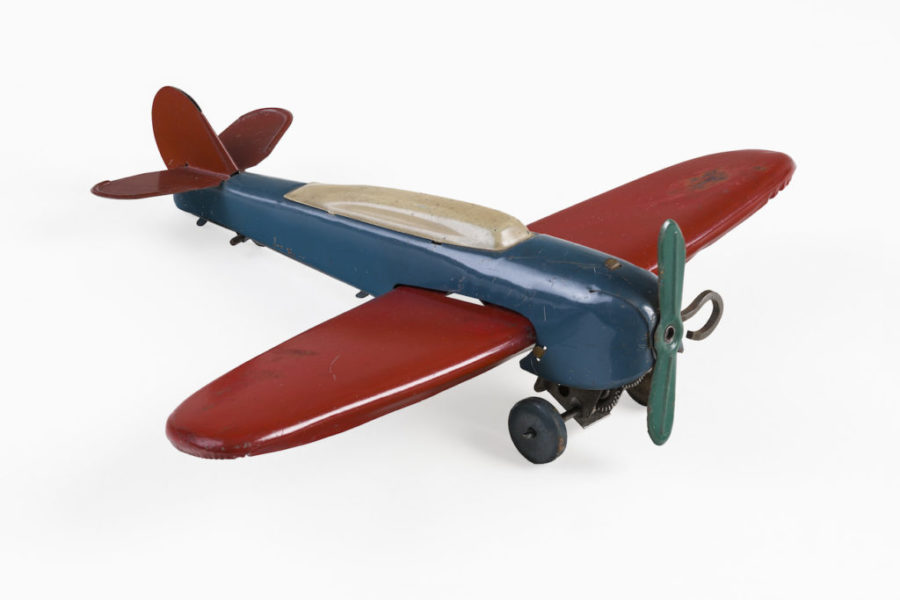
Hurricane “Victory”
Wells Brimtoy ,Great-Britain, 1945 – 1950, 25 x 22 cm
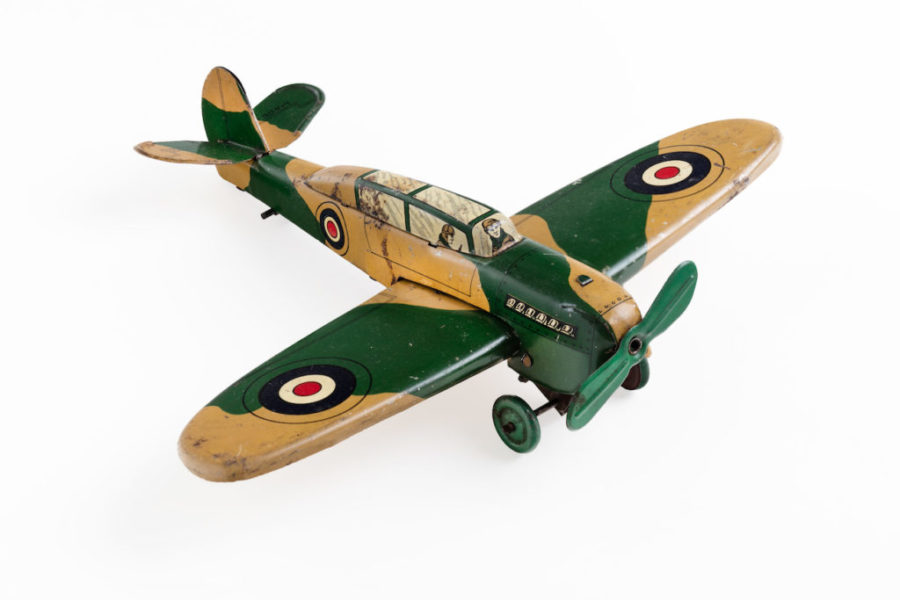
Hurricane
Wells Brimtoy, Great Britain, Ca.1936-1940, 25 x 22 cm
As toys by Jyesa
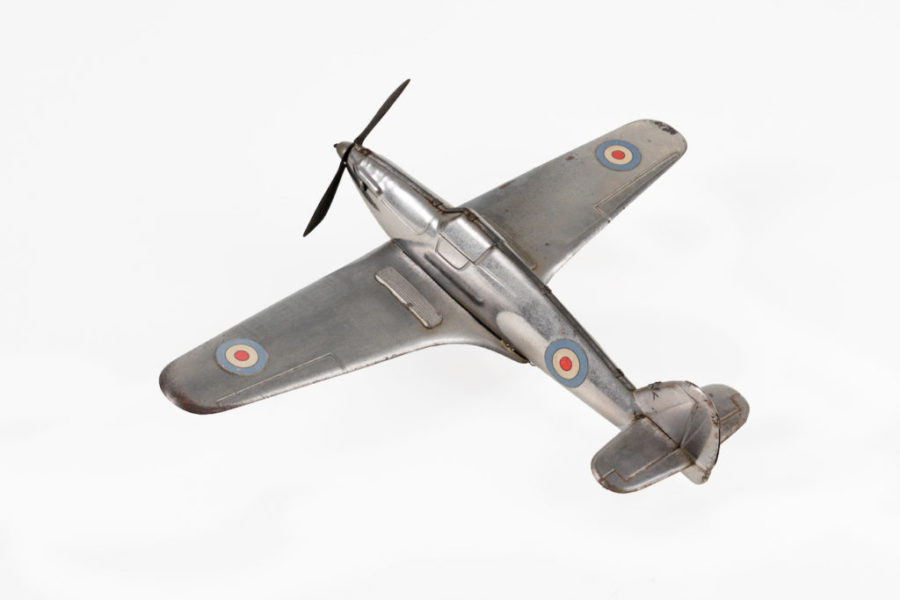
Hurricane
Jyesa Spain,1945 – 1950, 28.5 x 22.0 cm
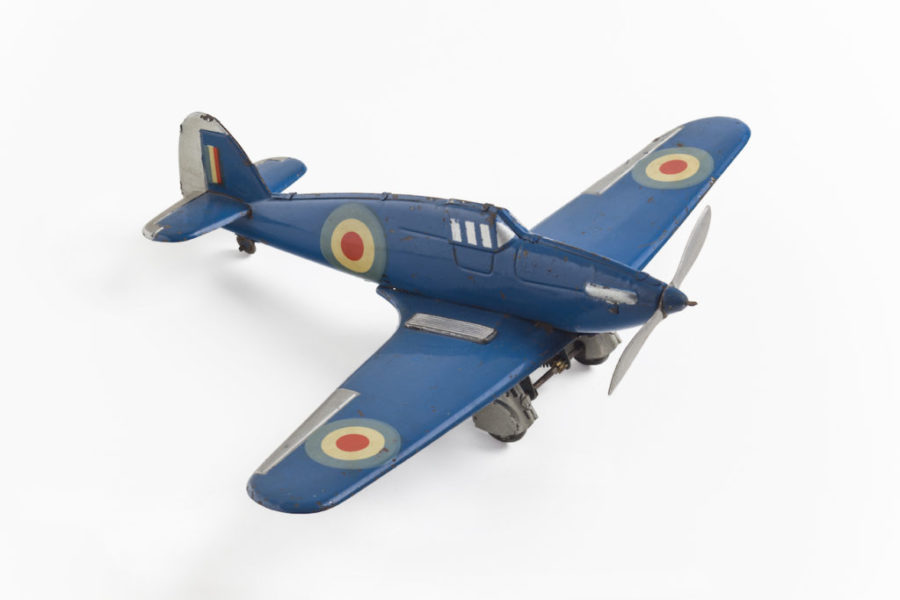
Hurricane
Jyesa Spain,1945 – 1950, 28.5 x 22.0 cm
Heinkel He 70G-1
In 1935 Rolls-Royce bought a Heinkel 70 equipped with a Kestrel engine supplied by them.
A controversy arase that the Spitfire would be derived from the British-acquired Heinkel 70G-1 equipped with a 604 kW Rolls-Royce Kestrel engine. Beverley Shenstone, R.J. Mitchell’s aerodynamic advisor denied it, he said that the He 70’s influence on the Spitfire design was limited to use as a benchmark for aerodynamic smoothness.
This Lehmann toy has RAF roundels on it, a coincidence with the Rolls-Royce order or a commercial aim on the British market?
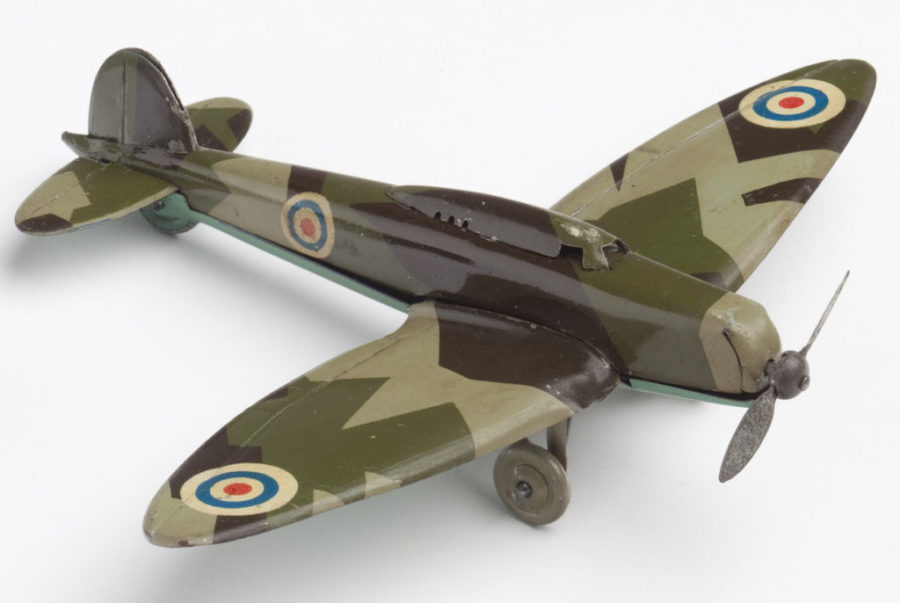
Heinkel He70
Lehmann, Germany, 1936-1938, 14.5 x 11.5cm
Supermarine Spitfire
The Supermarine Spitfire was designed by Reginald. J. Mitchell as a short-range, high-performance interceptor aircraft, it vas powered by a Rolls-Royce Merlin, its elliptical wing allowed a high top speed.
Reginald. J. Mitchell, the First of the few
Mitchell resolves to build the fastest and deadliest fighter aircraft. Convincing Henry Royce that a new engine is needed, Mitchell gets the powerplant he requires. Faced by the devastating news that he has only one year to live and battling against failing health, Mitchell dies just after hearing word that the government has ordered the Spitfire into production. The film “The First of the Few” released in 1942 illustrates this great aeronautical engineer.
As toys
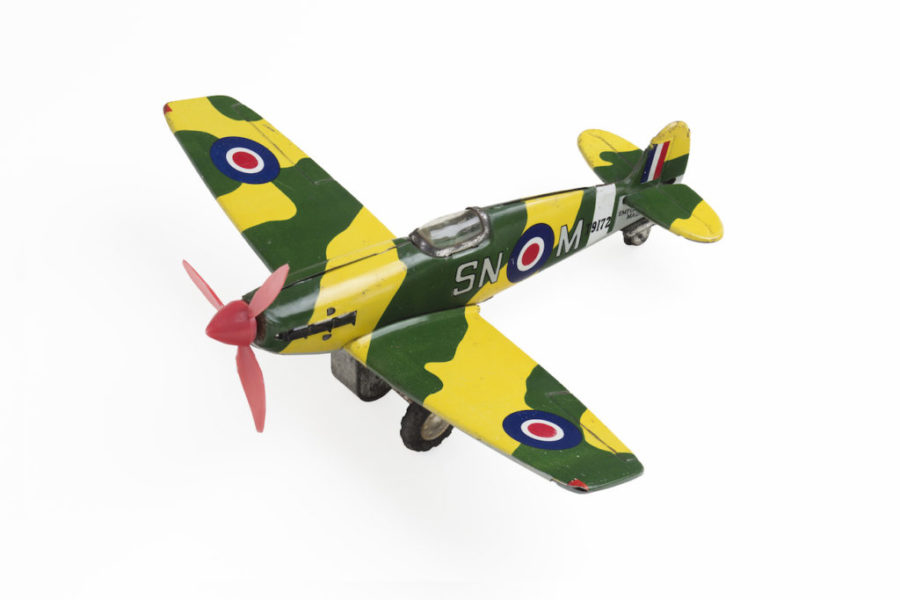
Spitfire
HTC, marketed by Lincoln Toys New Zealand, end of 1950s,early1960s, 25 x 23 cm
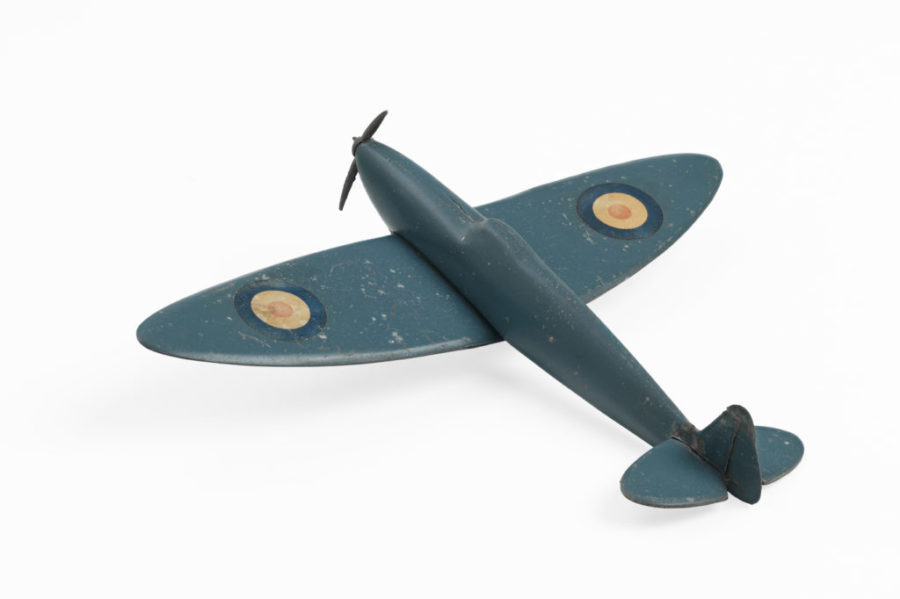
Spitfire
Manufacturer unknown, Great Britain, ca.1939, 18.5×15 cm
The dark side of the Force
Since late 1939, the Germans had been examining the possibilities of an air and sea invasion of Britain; fearing the Home Fleet, they decided to blockade the island and postpone the invasion until the British economy had been damaged and the Luftwaffe had total air superiority.
Some German toys from the 1930s wear the swastika, which I decided not to blur. This hasn’t been done to glorify but rather to stick to the historical truth.
Stuka
The Junkers Ju 87 or Stuka (Sturzkampfflugzeug), dive bomber and ground-attack aircraft.Though sturdy, and very effective against ground targets, the Stuka was vulnerable to fighter aircraft. During the Battle of Britain in 1940-41, its lack of manoeuvrability and speed demanded heavy fighter escorts.
As toys by Dux
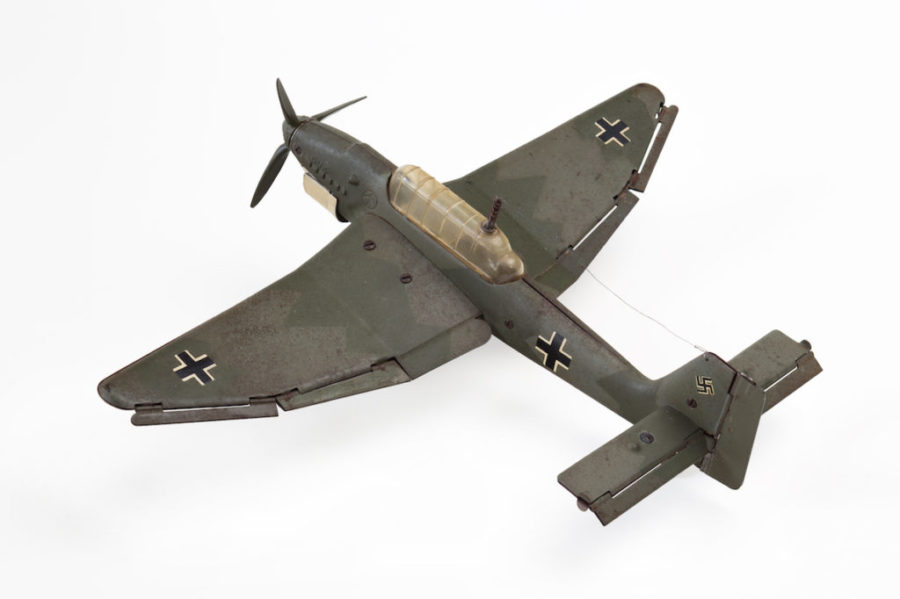
Stuka JU87
Dux, Germany, 1938, 30.5 x 23.5 cm
Messerschmitt Bf 109
Developed from 1935, operational in1937, it took part in the Spanish Civil War and was one of the most advanced fighters at that time . During the Battle of Britain, it was forced into the role of escort fighter, a role for which it was not designed, and it was widely employed as a fighter-bomber, as well as a photo-reconnaissance platform.
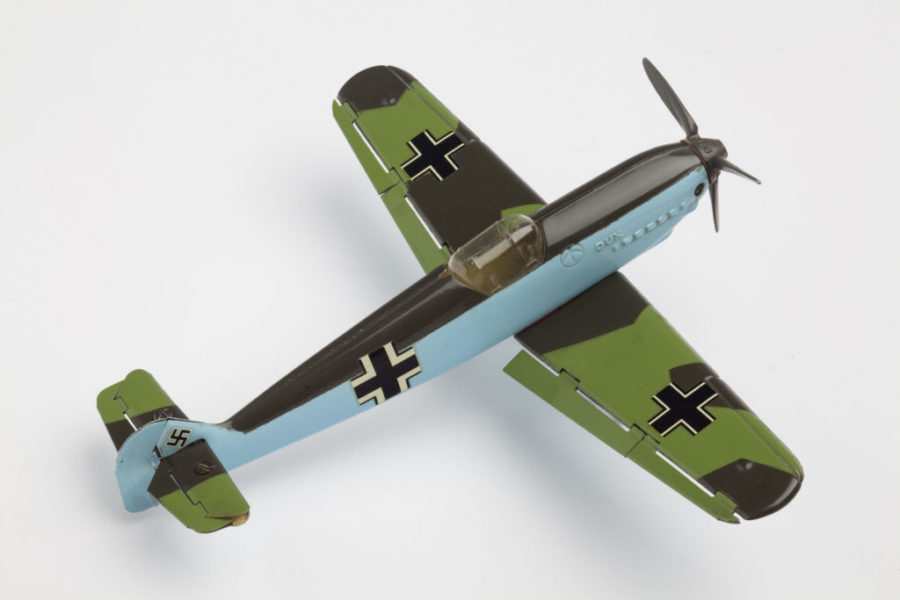
Messerschmitt Me109
Dux, Germany, end of 1930s, 21.5 x 20cm
The following three toys by Lehmann
Heinkel He 111
Designed in 1934, first flight in 1935. Recognisable by its ‘greenhouse’ nose on later versions, the Heinkel He 111 was the Luftwaffe’s most numerous bomber at the start of the war. It performed well until it encountered serious opposition from fighters Hurricanes and Spitfires , its defensive armament proving inadequate.
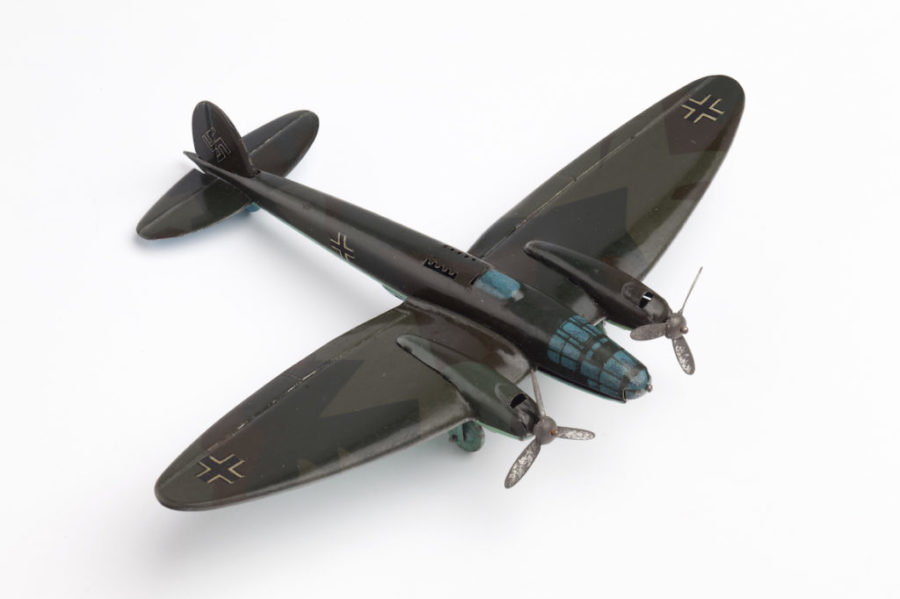
Heinkel He 111 with night camouflage and raised cockpit
Lehmann, Germany, 1940 – 1944, 18.5 x 14 cm
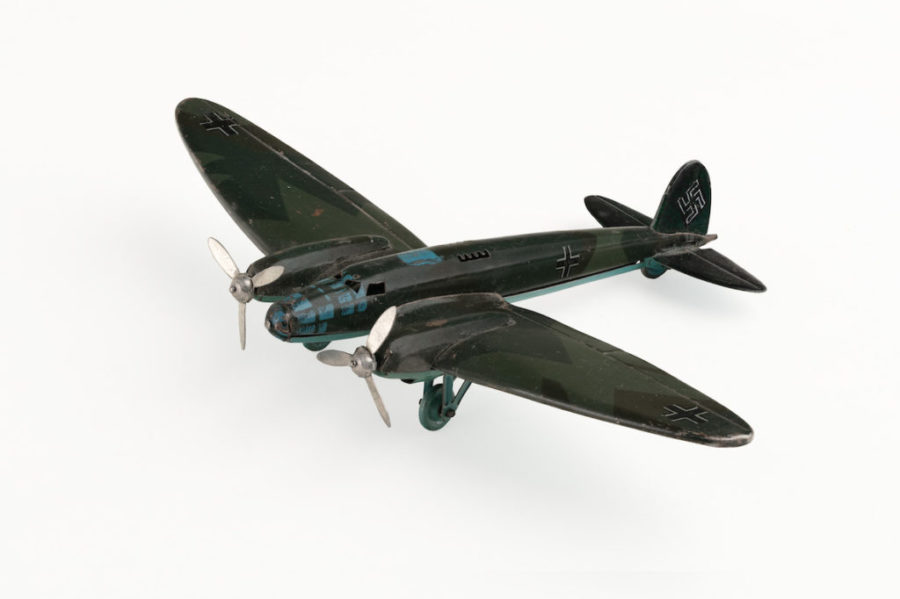
Heinkel He 111 with night camouflage and canopy cockpit
Lehmann, Germany, 1940 – 1944, 18.5 x 14 cm
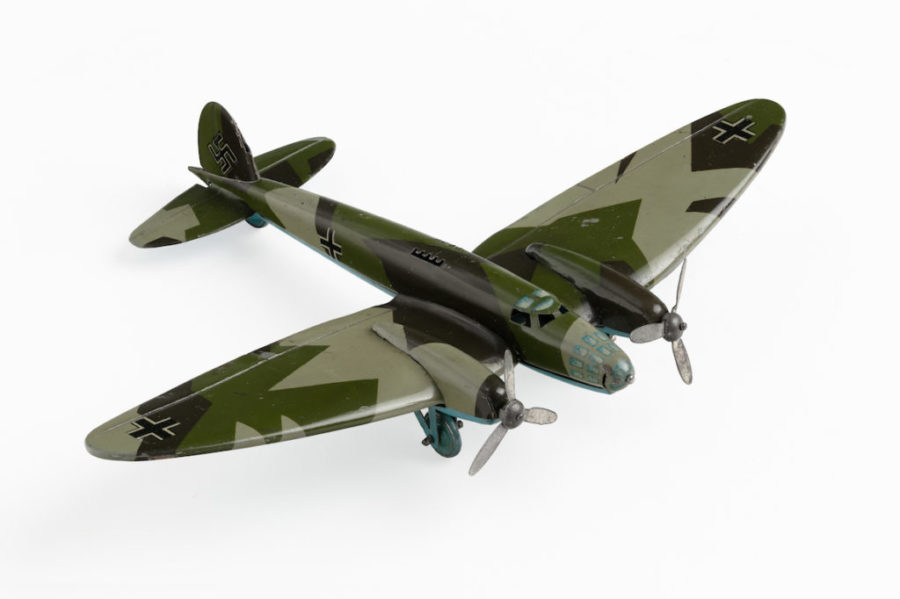
Specializzato in fotografia di opere d’arte e architettura.
Collaboratore della rivista di cinema, Cinemany.
Membro di SBF e Visarte.
Heinkel He 111 with daytime camouflage
Lehmann, Germany, 1940 – 1944, 18.5 x 14 cm
